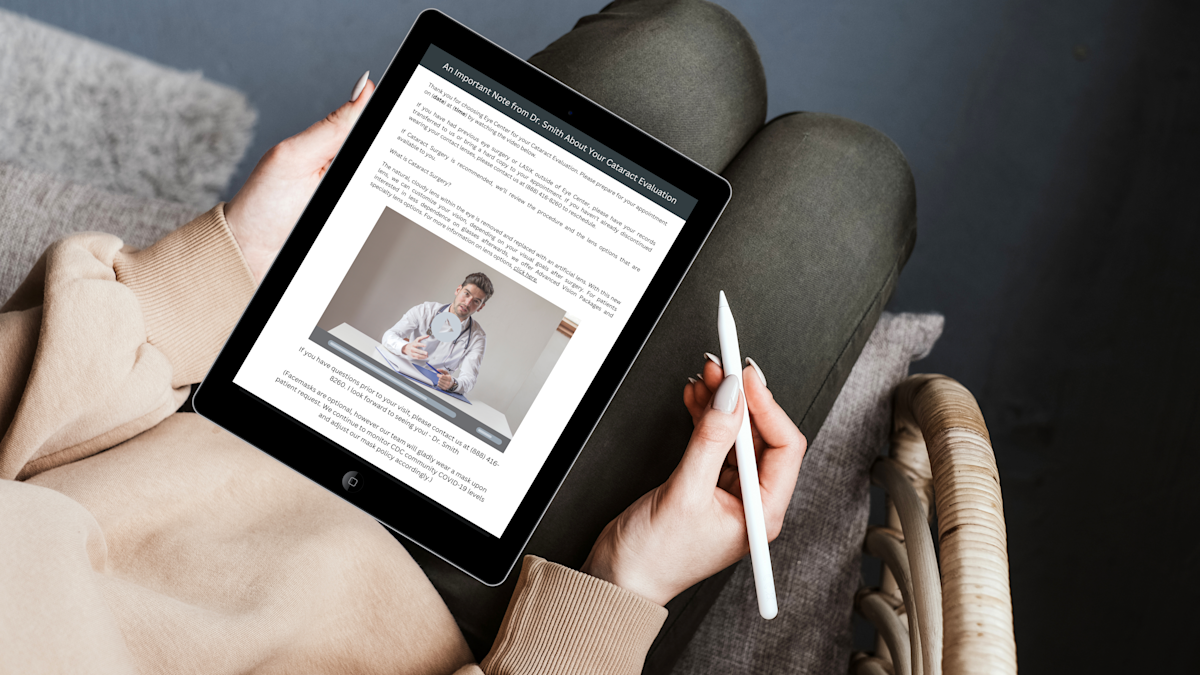Enhanced Appointment Reminders: Explore the effectiveness of embedded videos for patient education

Description
While working with our customers, a common topic was coming up – the need to educate patients prior to high-risk or surgical evaluation appointments.
Specialties
All
Channels
Email and/or text depending on patient preferences. Video can be embedded in emails for easy access and higher viewing rates.
Sample
Recognizing the need, we focused on leveraging existing educational content from the practice to deliver information to patients before their scheduled visits. We initially used customized verbiage in emails, text messages, and phone calls to deliver this education, however, the past year has revealed significant success in delivering this information via video through targeted email and text communications.

We began with generic educational videos, however, as we engaged with medical groups eager to produce personalized content with their own providers, we refined our approach.
Results
Our primary objective was to optimize chair time efficiency, allowing doctors to engage in more meaningful interactions with informed patients. The education immediately showed promising results and not only improved patient understanding, but was resulting in improved doctor-patient interactions and better productivity overall.Our secondary objective was to reduce no-show rates. Focusing on cataract evaluation appointments, we initially sent generic videos via text and email. This was already showing great success. However, recognizing the potential impact of personalized content, we collaborated with a doctor from the practice to create a customized video educating the patient before their appointment as well as informing them of their options pending the outcome of the visit.In comparing no-show rates for the 3 month period we ran the test (with the personalized video sent out a week and 48 hours before the appointment) versus the same 3 month period a year prior (without video education) we noticed a remarkable transformation. The no-show rate dropped from 13% to 5%, positioning this appointment type well below the industry average.After seeing the success of this campaign and others like it, we have continued to add product development initiatives to help practices deliver more hyper-personalized patient experiences.